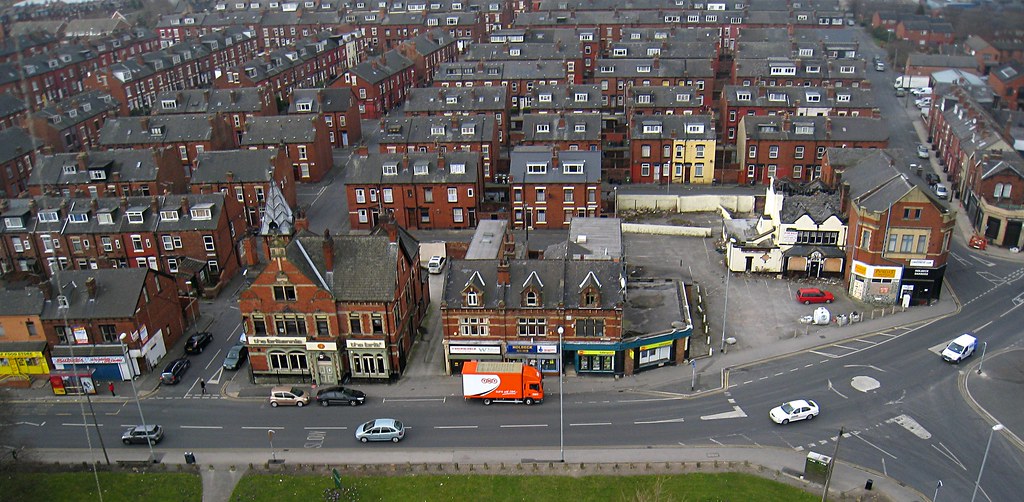Many people left their country homes to pursue life in one of the newly developing industrial towns.
These houses in Birmingham are the city’s last surviving court of back-to-back houses.
Image credit:www.thoresby.org.uk
Back-to-back houses were notoriously unhealthy.
They were overcrowded, lacked light and ventilation, had poor drainage and bad sanitation.
In 1875, the Public Health Act prohibited building of any more back-to-back houses.
But Leeds still defied all opposition and continued to build them until the 1930s.
After the First World War, many towns demolished back-to-backs as part of post-war redevelopment program.
This process continued until the 1970s.
Child skipping in a street of back to back houses, Leeds 1970.
Photo credit: Nick Hedges
Crossing wasteland from back to back housing towards railway line, Leeds 1970.
Photo credit: Nick Hedges
Washing hanging out to dry across back to back housing street, Leeds 1970.
Photo credit: Nick Hedges
Living room and kitchen Leeds back to back housing 1970.
Photo credit: Nick Hedges
A woman and a child outside their back-to-back in Birmingham in the 1920s.
Photo credit:Birmingham Mail
Photo credit:Birmingham Mail
Children playing outside back-to-back houses in Birmingham in 1956.
Photo credit:Birmingham Mail
Back-to-back houses in Summer Lane, Birmingham.
Photo credit:Birmingham Mail
Back-to-to houses in Beeston, a suburb of Leeds.
Photo credit:Jon Peender/Flickr
Back-to-to houses in Beeston, a suburb of Leeds.
Photo credit:Chris Jones/Flickr
Sources:Wikipedia/Wikipedia/Period House/www.bradfordhistorical.org.uk/www.booksie.com


















